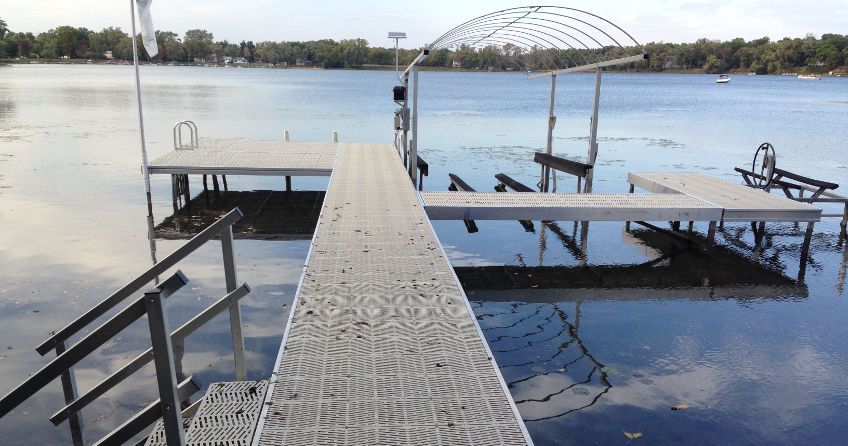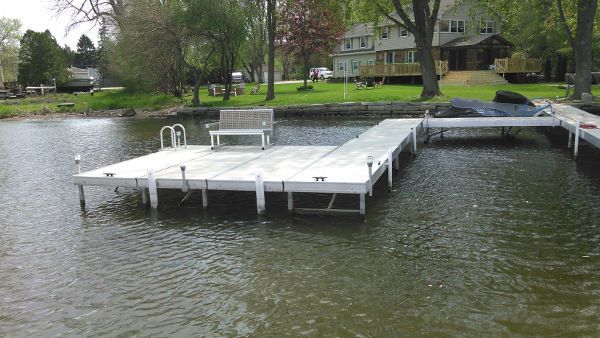Choosing a Pier Can Seem Overwhelming. Here are the Main Types of Piers to Consider
With so many types of piers available, deciding which one matches your needs can be a challenge.
Piers come in all shapes and sizes, and often go by a variety of names. Dock, wharf, jetty, and quay are just a few. What’s more, an array of pier designs and construction materials are offered.
Luckily, we’re here to help clear up some of the confusion with piers and help you figure out what types of piers are best for you. Read on for a rundown of your options.
Do You Want a Fixed or Floating Pier?
Your first big decision is whether you need a fixed pier, or a floating pier. As you can guess, a fixed pier remains in place. A floating pier, on the other hand, has fewer supports and floats atop the water.
Your choice depends on where you’ll put the pier.
Tidal Variations
Tidal ranges are a key factor. Does the water in your area rise and fall, with major differences in water levels? If this is the case, you probably don’t want a fixed pier.
As the water rises and falls, so does your boat. If you dock your boat at high tide and the tide falls, and the boat with it, then the line will get too taut. It may even lift your boat partly out of the water.
On the other hand, if you dock at low tide and the tide rises, the line will become too lax. As a result, waves may push your boat into the side of the pier.
To avoid damage to your boat, a floating pier is best for areas with wide tide changes.
Steady Water Levels
You don’t need a floating pier if your water level doesn’t vary widely. In this case, a fixed pier might be preferred. One advantage? Fixed peers offer more stability when you walk on them.
What Kind of Material Do You Want?
Your next major decision is the type of material for the deck. Types of piers vary, but the usual materials are aluminum, vinyl, and wood.
Aluminum Piers
Aluminum has the edge over steel or iron because it doesn’t rust. Instead, when aluminum corrodes it forms a coating of aluminum oxide. This is a hard material that protects the surface of the aluminum from further corrosion. Suppliers such as Max Dock Systems offer piers made with aluminum that has been anodized.
Anodizing first submerges aluminum in an acid electrolyte bath. Next, a current passes through the bath. This creates an even oxidation on the surface of the aluminum. Anodizing creates a resilient, easy-to-maintain surface. The milky, white finish is also appealing.
Vinyl Piers
Vinyl is water-resistant and relatively low-cost option for the pier platform. You can give vinyl an anti-slip surface for sure footing.
Wood Piers
The huge variety of stains and finishes makes wood an attractive option. Pressure-treated wood is water-resistant. Wood pier systems tend to have more bounce when you walk on them, however. Consider a design with an aluminum support system to avoid this. The support system is welded in under the wood decking.
Can Water and Sunlight Get Through?
Whatever the material, look for a design that allows some water and sunlight to get through the platform of the pier. These designs:
- Keep water from pooling on the pier platform, which could pose a slipping hazard.
- Reduce the risk that the pier will be lifted and damaged by tidal changes or flooding.
- Prevent the pier from heating up and becoming painful to the touch.
- Enhance your environment by allowing water organisms to receive normal amounts of sunlight.
The variety of choices make it easy to select a pier that is both practical and appealing.
What Pier Shape Do I Need?
The final question is the most obvious: the configuration of your pier. Whether your pier is for a marina, a dock rental slip, a campground, or other docking needs, there’s a configuration to suit your project. T-shapes, L-shapes, and angled docks are common options.
Base your choice on these factors:
- Water conditions where the pier will be built
- The pier’s purpose
If, for example, there is a wide tidal range, or a lot of shallow water close to the shore, consider a long pier. The pier will extend into deeper water so that your boat isn’t damaged in shallows.
What if space is limited or you’re on a busy waterway? Look into a row of shorter “finger” piers instead.
Where Can You Find All Types of Piers? Captain Rod’s
Choosing a pier is a big decision. At Captain Rod’s Boat Lift & Pier Services, we’ll take the time to create a pier that fits your needs. Fill out a contact form or give us a call at (815) 759-9134. We’re happy to answer your questions or get moving on your custom-built pier. We’re proud to stock Max brand premier custom dock systems.
No matter what you call it—pier, dock, or jetty—we’ll give you a place to drop anchor.
Editor’s note: This blog was originally published on July 19, 2016 and was updated on May 19, 2019.



